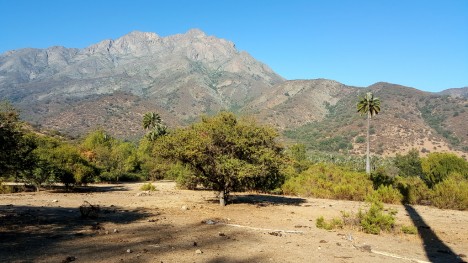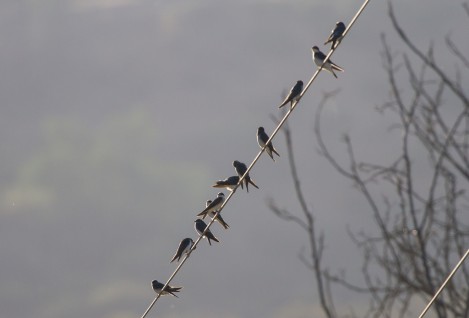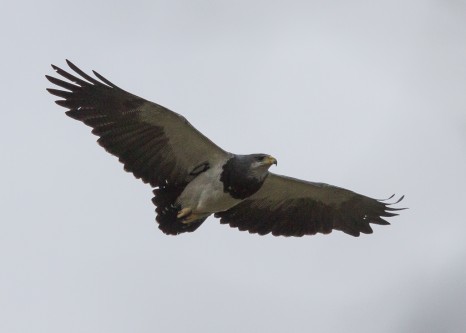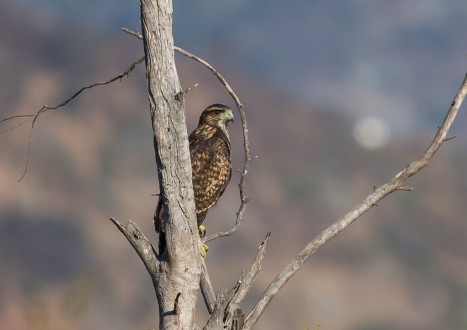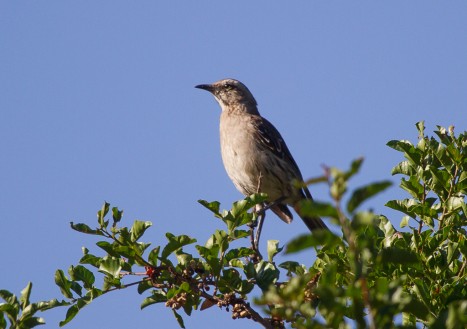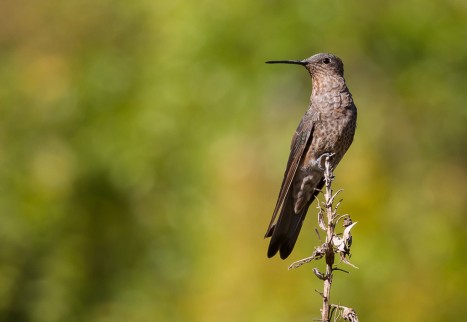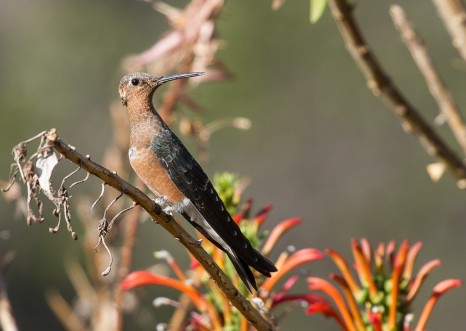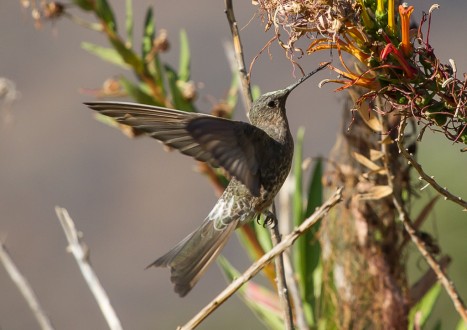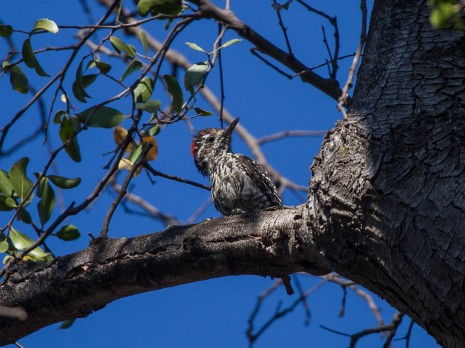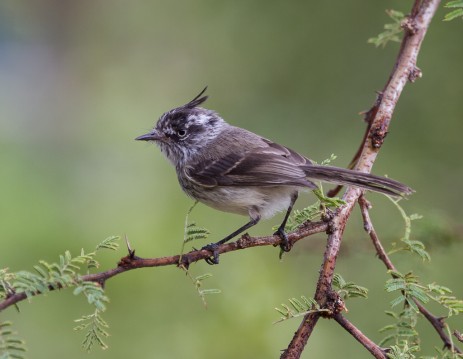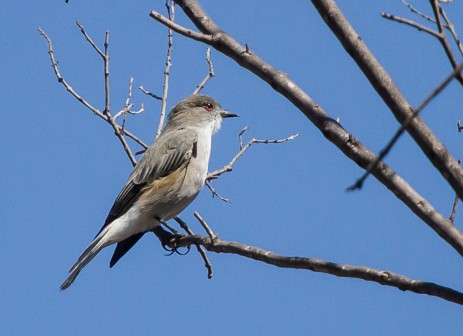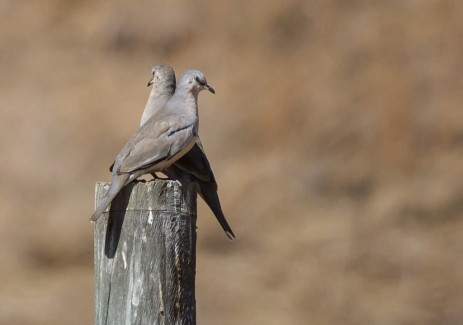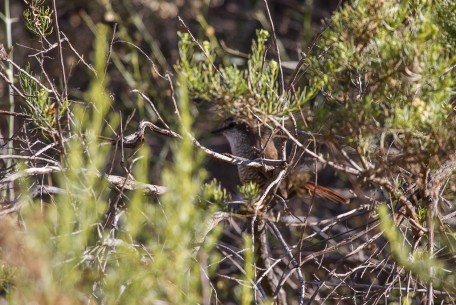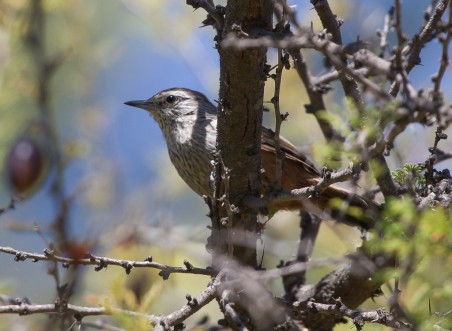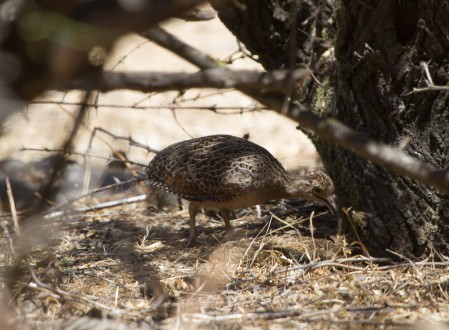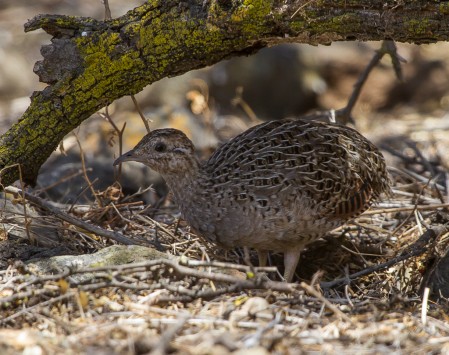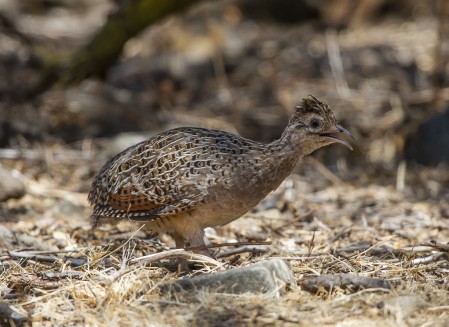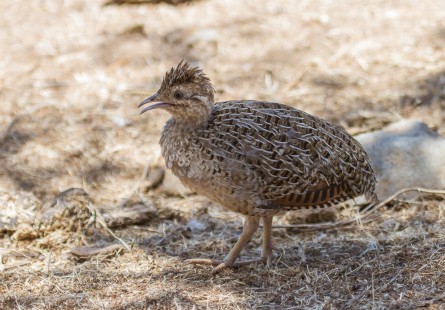La Campana N.P., Chile
La Campana National Park can be found about one hour drive north of Santiago. It is one of the last forests of the endemic Chilean palm, and several endemic birds can also be found here.
A hot day in February, and we were heading north from Santiago to the La Campana park. It had been very hot and dry for weeks, and the creek running through the park was dried up. This park is very popular for camping, but camping was prohibited due to the dry conditions. But birders were allowed in, thankfully. Having few people around is of course good for birding. The park is very dry in summer, and steep mountains surround the area. The park has a large number of Chilean palm trees (endemic). These trees can get more than a thousand years old. They have coconuts the size of walnuts (edible).
We were specifically looking for the Chilean Tinamou and a few other endemic birds. The park is also a good place for owls (thanks to a healthy population of rodents), but we did not see any owls on this trip. Starting at 7am from Santiago, we arrived a little over 8am. Chilean swallows were sitting on a string just outside the park gate.
There is a fee to be paid to enter the park. The most common raptors to be seen here are the Black-chested buzzard-eagle, Harris's Hawk and Variable Hawk. We saw the two first ones.
The most obvious of the endemics is the Chilean Mockingbird. Common all around the park.
The Giant hummingbird is also found here. We were lucky enough to see both the female and male together. The Giant hummingbird is really huge, and thanks to its size, photographing it is rather straight forward, compared to most other hummingbirds that tends to just zip by at high speed.
Woodpeckers were definitely around, both the Striped woodpecker and the Chilean flicker. Never managed to get a decent photo of the Chilean flicker though, despite seeing it several times.
Among the common passerines to be found here are the Common diuca-finch, Fire-eyed diucon, White-crested elenia, Gray-hooded sierra-finch, Tufted tit-tyrant and Plain-mantled tit-spinetail. And of course the omnipresent Rufous-collared sparrows and Austral thrushes are hard to avoid.
What about pigeons? Chilean pigeon, Eared dove and Picui ground-dove were all checked off.
But now to the more interesting ones. We could hear the characteristic call of the endemic Moustached turca several times, but never saw it. Another endemic tapaculo found in La Campana is the White-throated tapaculo. This bird is super-shy, and likes to hide in bushes. We did see it for quite some while, jumping around in the bushes, but of course I never managed to get a decent photo.
The Dusky-tailed canastero is another good bird to be found in La Campana. Shy of course, and hard to photograph. But it does respond well to calls.
The last bird we wanted to find was the endemic Chilean tinamou. There is one part of the park where it is likely to be found. Normally this area is closed for visitors, but birders are "allowed". Quite a few California quails were running around this area too. Our guide took us up a gentle slope, and we had not walked more than a 50m from the car before the tinamou suddenly was spotted. Quite in the distance first, and between bushes, it was hard to see, but we sat down and waited. And the tinamou actually walked straight towards us, coming closer and closer, apparently oblivious to our presence. Eventually, it got so close that i could not focus any more with the Canon 100-400mm! Great experience, and the guide said he never saw a tinamou that close before.
At 3pm the temperature had soared to 35C, and birds in general were taking a break (except for the tinamou which seems to like hot weather). We headed back to Santiago for a pisco sour. La Campana is a great park to visit, easily accessible from Santiago. Bring a local guide to get the most out of it!
